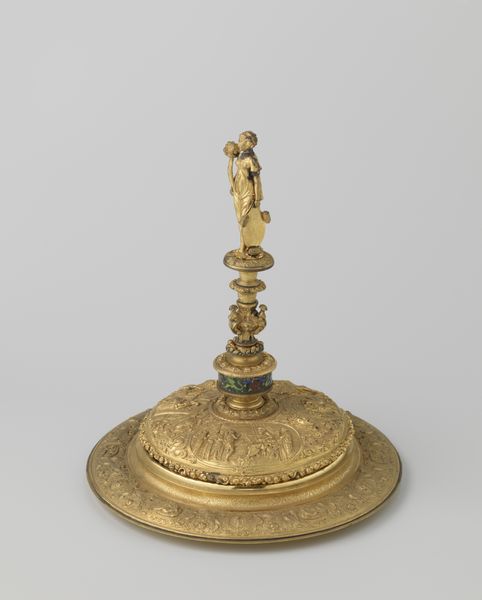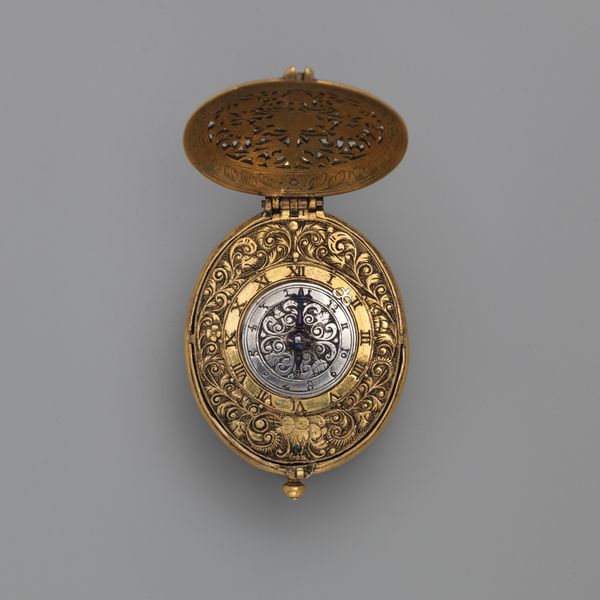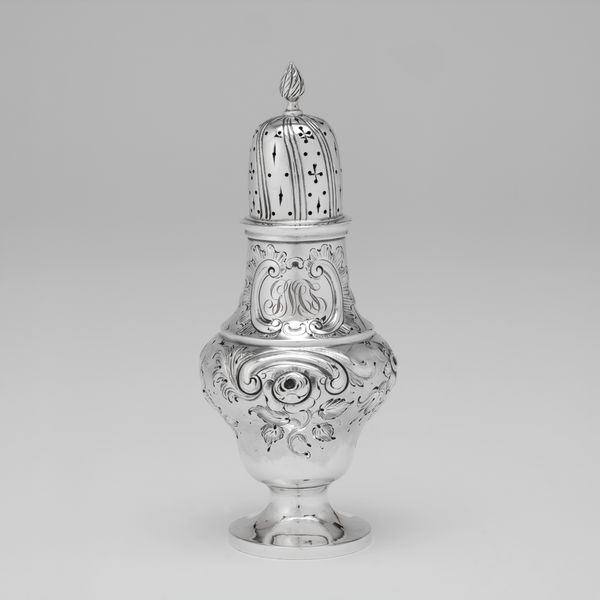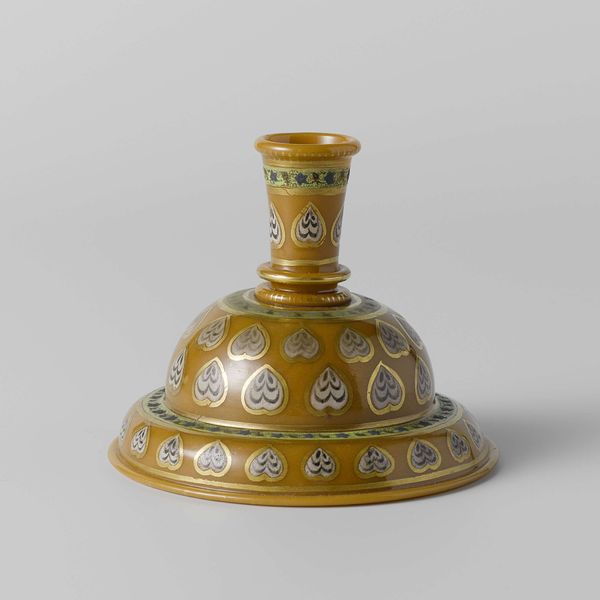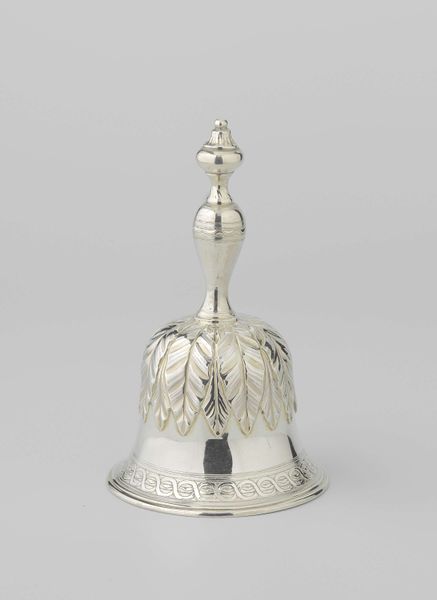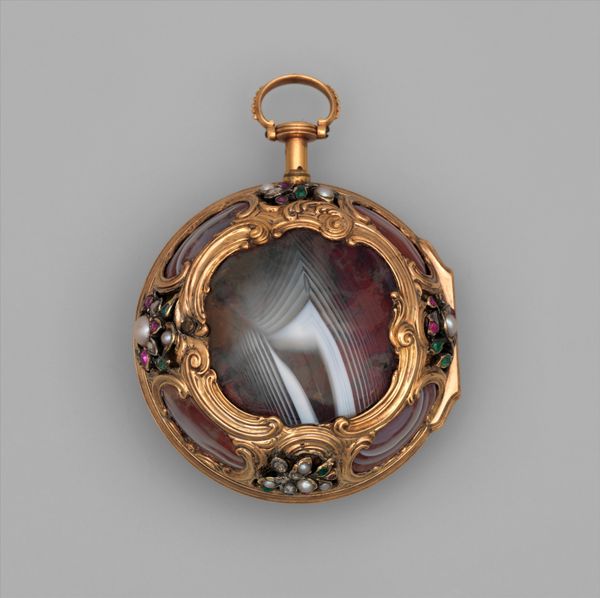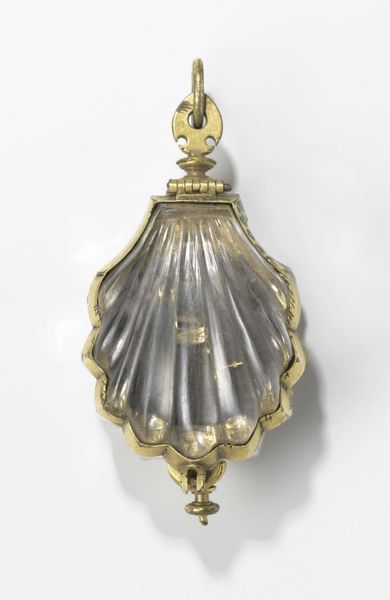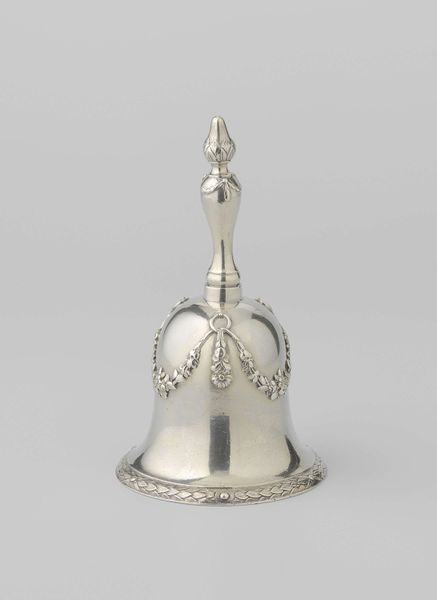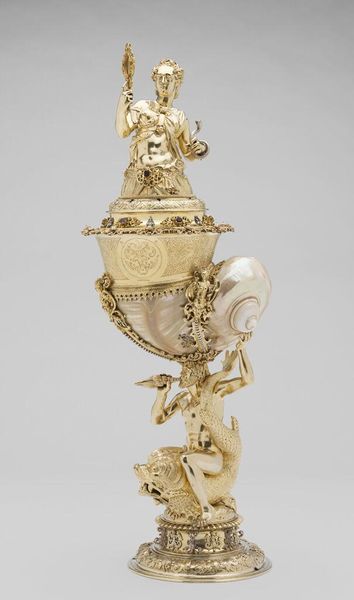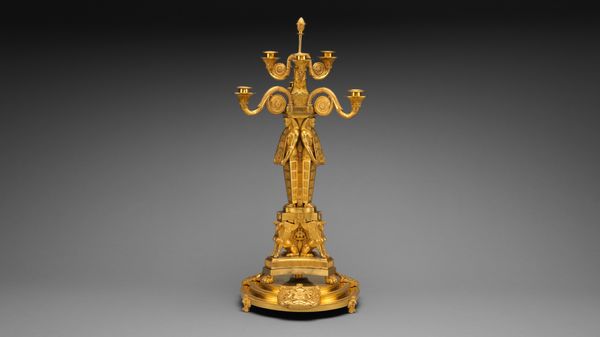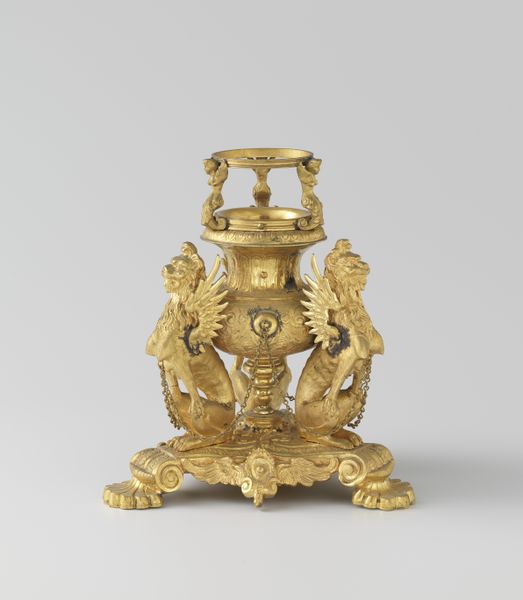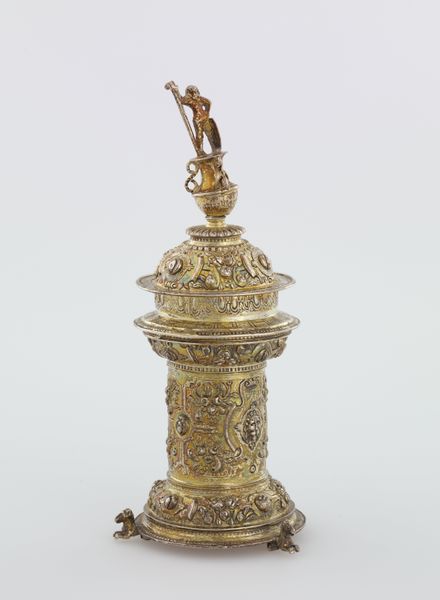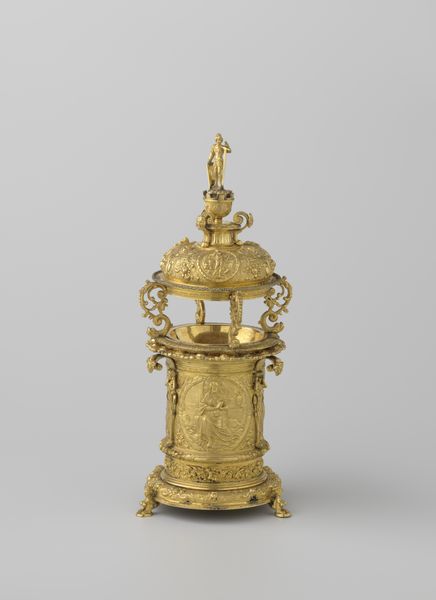
metal, gold, guilding, sculpture, enamel
#
portrait
#
art-nouveau
#
metal
#
asian-art
#
gold
#
jewelry design
#
guilding
#
sculpture
#
enamel
#
decorative-art
#
miniature
Dimensions: height 5.6 cm, width 3 cm, diameter 2.2 cm, height 4 cm, width 9 cm, depth 6 cm, weight 41.56 gr
Copyright: Rijks Museum: Open Domain
Editor: This exquisite object is entitled "Cachet van Koningin-regentes Emma", dating back to around 1890 and crafted by Hunt & Roskell. It’s fashioned from an array of materials—metal, gold, enamel, and what looks like gilding, resulting in a kind of miniature sculpture. The Art Nouveau ornamentation is just gorgeous! I wonder, with your expertise, what strikes you about this piece? Curator: What immediately captures my attention is how this object served within the framework of royal power and representation. The Cachet, or seal, was likely used by Queen Regent Emma to authenticate documents, acting as a visual assertion of her authority. Editor: It's like a beautiful tool of governance! What do you think its decorative style reveals? Curator: The combination of Asian art influence and Art Nouveau is interesting. Think about the context: the late 19th century, a time of intense colonialism. The Dutch monarchy certainly engaged in those activities in that time. So, is this decorative mix purely aesthetic, or does it reflect a specific cultural and political narrative? The materials—gold, enamel—speak of luxury and, therefore, power. Does that level of conspicuous consumption send any particular message? Editor: It seems that something so visually appealing could carry pretty complex messages about wealth, colonialism, and governance! Curator: Precisely. It compels us to ask: Who was this seal for? What was its intended audience, both domestically and perhaps even internationally? How might a Cachet like this shape the perception, and ultimately, the reception, of the monarchy? Editor: That reframes it. It's no longer "just" beautiful; it’s a designed message aimed at multiple audiences. I hadn't considered that before. Curator: Indeed. Context reshapes our understanding. What begins as an appreciation for the aesthetics becomes an inquiry into its function within a specific social and political milieu. Editor: I see that now. Thanks; I’ll never look at decorative art quite the same way.
Comments
No comments
Be the first to comment and join the conversation on the ultimate creative platform.
